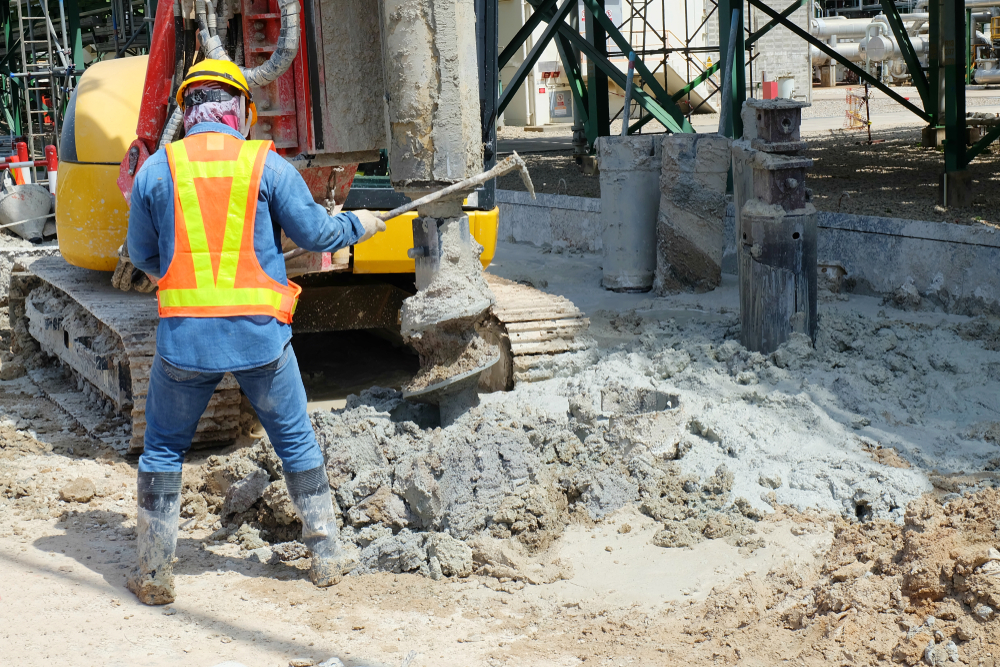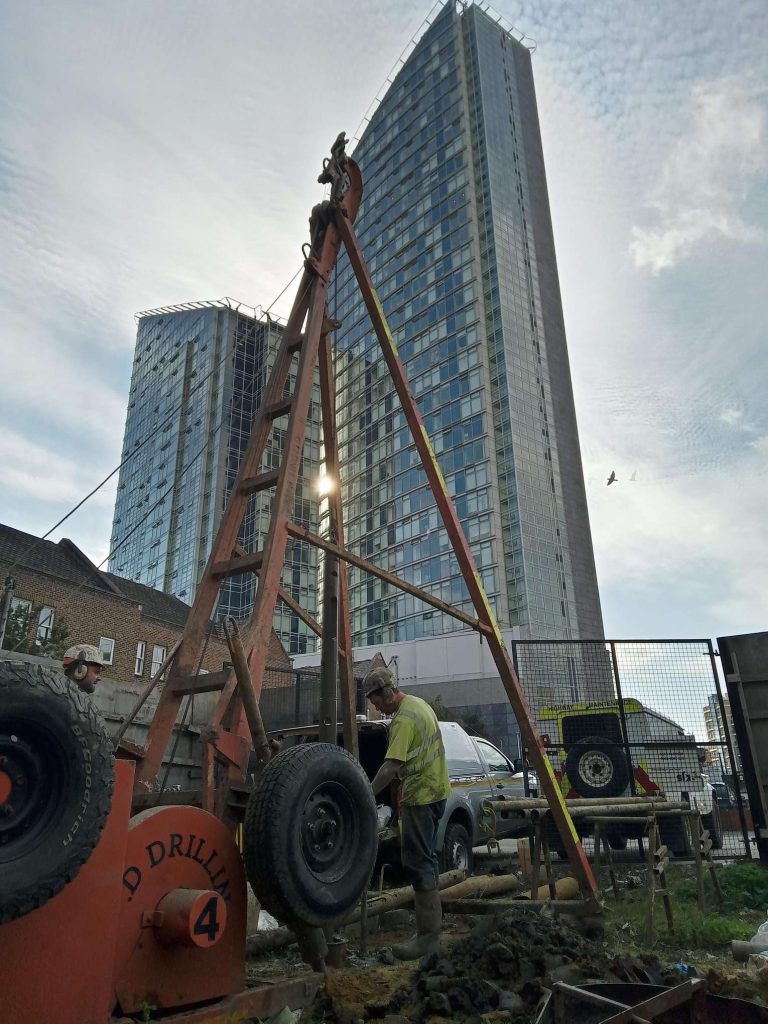Why the Geotechnical Industry Demands Ingenious Solutions Currently
Wiki Article
Understanding the Comprehensive Role of Geotechnical Engineers in Ground Investigation and Dirt Analysis for Building And Construction Tasks
Geotechnical engineers are integral to the success of building tasks, offering essential understandings via thorough ground examinations and soil analysis. Their know-how in assessing dirt actions and employing advanced testing methods educates essential choices that copyright structural honesty and safety. By determining possible risks and working together with multidisciplinary groups, these professionals significantly affect job end results, including performance and cost-effectiveness. The intricacies of their duty commonly expand beyond these features, triggering a much deeper expedition right into the methods they utilize and the implications of their searchings for on overall job practicality.Function of Geotechnical Engineers
The critical duty of geotechnical engineers in construction tasks can not be overemphasized, as they provide crucial insights into soil actions and site conditions. These experts are tasked with analyzing the suitability of the ground for various types of structures, making sure safety and security throughout the building procedure. Their competence encompasses a variety of activities, consisting of website characterization, soil sampling, and research laboratory testing, which are vital for establishing the physical and mechanical homes of the dirt.Geotechnical engineers utilize their findings to develop foundational styles that suit load-bearing requirements and reduce threats associated with dirt negotiation, slope, and liquefaction security. They play a crucial duty in determining prospective threats, such as groundwater fluctuations and contamination, which can substantially influence project stability. They work together with designers, civil engineers, and specialists to ensure that geotechnical considerations are integrated right into the total style and building and construction stages.
Ground Investigation Strategies
Ground examination techniques develop the backbone of geotechnical engineering, enabling engineers to get a comprehensive understanding of subsurface problems. These strategies are vital for examining soil buildings, figuring out groundwater degrees, and recognizing prospective geological risks.Common methods consist of borehole boring, which permits the extraction of soil examples at numerous midsts, offering vital data for evaluation. Additionally, sitting screening strategies, such as Common Penetration Tests (SPT) and Cone Penetration Examinations (CPT), are used to assess soil strength and density straight in the ground.
Geophysical techniques likewise play a considerable role in ground investigations. Techniques such as seismic studies and electric resistivity tomography aid analyze subsurface attributes without substantial excavation. geotech engineer. These non-invasive methods are particularly advantageous in sensitive or big locations where interruption must be minimized
Furthermore, exploratory trenches can be excavated to aesthetically evaluate soil layers and recognize any type of abnormalities. Each of these strategies adds one-of-a-kind insights, permitting geotechnical engineers to develop exact website evaluations and inform design choices. In summary, a mix of these ground investigation methods is crucial for effective building jobs, making sure safety and security and architectural honesty.
Soil Evaluation Methods
Dirt evaluation techniques are vital for comprehending the chemical and physical residential or commercial properties of dirt, which directly affect the design and building and construction of structures and various other structures. Various methods are used to examine soil characteristics, making sure that geotechnical engineers acquire exact information for informed decision-making.One frequently utilized approach is grain size evaluation, which figures out the distribution of bit dimensions within a dirt sample. This is vital for classifying dirt types and predicting their behavior under tons. An additional essential technique is Atterberg limits screening, which examines the plasticity and moisture content of fine-grained dirts, supplying understandings right into their design residential properties.

Area tests, such as Conventional Penetration Tests (SPT) and Cone Infiltration Tests (CPT), deal useful in-situ information concerning soil strength and stratification. Collectively, these soil evaluation methods create the structure of geotechnical investigation, permitting designers to develop safe and efficient frameworks customized to the details conditions of the website.
Threat Reduction Methods
Applying effective threat reduction strategies is vital for geotechnical designers to attend to potential difficulties in construction tasks. These approaches are vital in identifying, analyzing, and managing dangers connected with soil conditions, site stability, and groundwater variations, which can adversely affect task outcomes.One key technique includes conducting comprehensive site investigations that make use of sophisticated geophysical methods and thorough soil sampling. By acquiring accurate data on subsurface conditions, designers can make enlightened decisions on design and building and construction approaches. Furthermore, employing predictive modeling devices permits for the simulation of numerous circumstances, making it possible for designers to foresee possible troubles and implement safety nets.
In addition, developing clear interaction networks among task stakeholders cultivates a joint method to take the chance of management. Routine updates and appointments ensure that all parties understand the developing site problems and can adjust their strategies as necessary.

Influence on Construction Projects
The effectiveness of risk mitigation methods directly affects the overall success of building projects. Geotechnical designers play a critical duty in this domain name, as their experience in ground investigation and dirt evaluation notifies critical decisions throughout the building process. By properly examining soil conditions and recognizing potential dangers, these specialists allow project teams to design effective options that minimize threats related to ground instability, water seepage, and other geotechnical challenges.The impact of complete geotechnical evaluation appears in various aspects of building and construction projects, including price administration, job timelines, and structural integrity. Early recognition of concerns enables prompt treatments, minimizing expensive delays and spending plan overruns. Furthermore, a comprehensive understanding of site problems boosts the layout and engineering procedure, ensuring that frameworks are developed to endure environmental stress and potential all-natural catastrophes.
Ultimately, the payments of geotechnical engineers are indispensable to the effective implementation of building and construction jobs. Their work not just cultivates security and compliance with guidelines however additionally enhances the long-term sustainability of structures, making certain that they execute properly throughout their designated lifespan. The collaboration between other stakeholders and geotechnical teams is necessary for accomplishing optimum end results in construction undertakings.
Conclusion
Finally, geotechnical engineers perform an essential function in building and construction jobs with extensive ground examinations and soil evaluations. Their proficiency in assessing soil behavior, utilizing numerous investigation strategies, and executing risk mitigation techniques dramatically adds to the structural integrity and safety of developed atmospheres. By collaborating with multidisciplinary groups, these experts improve project effectiveness and guarantee conformity with safety and security requirements, eventually bring about effective construction outcomes and lowered prospective threats.Geotechnical engineers are important to the success of building and construction tasks, offering crucial insights through extensive ground examinations and dirt analysis.The pivotal function of geotechnical designers in building and construction projects can not be overstated, as they provide necessary understandings into dirt habits and website conditions. Their know-how includes a broad variety of activities, including website characterization, dirt tasting, and research laboratory testing, which are essential for figuring out the physical and mechanical properties of the soil.
By properly analyzing soil problems and recognizing possible dangers, these professionals enable task teams to design efficient options that minimize risks connected with ground instability, water infiltration, and various other geotechnical difficulties.
In conclusion, geotechnical engineers perform a vital feature in building projects via detailed ground examinations and dirt analyses.
Report this wiki page